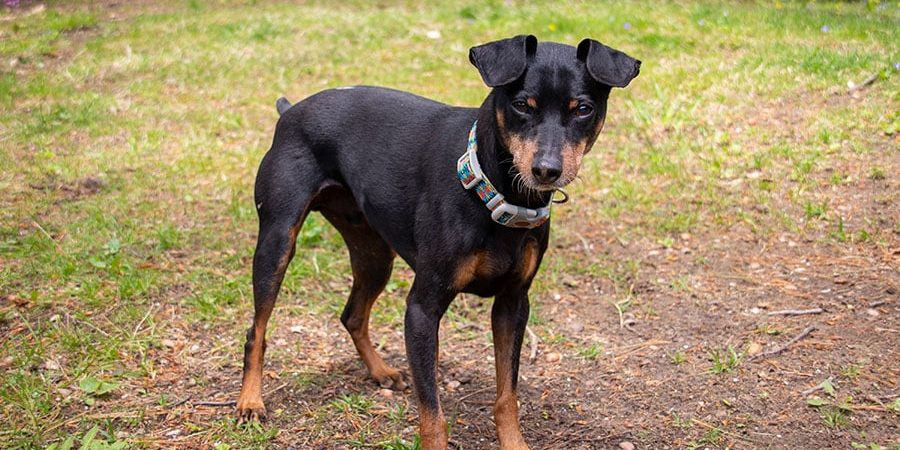You have a beautiful lawn in your cedar fence backyard. Evenly cut, trimmed, and weeded, it’s the perfect place to grill out and throw the frisbee.
The only problem: your furry friend won’t stop digging up the grass in several muddy areas. And poor drainage only makes the issue worse.
It’s frustrating when your dog gravitates to those areas, digging and rolling in the mud before tracking that mud right into your home. Maybe your dog poops in a muddy area, making cleanup difficult.
But covering the mud can take time away from your weekend and be expensive.
Sound familiar?
We’ll explore some short and long-term options for reducing muddy areas in your yard.
Short Term Solutions to Muddy Yards
There are plenty of quick solutions to reduce muddy areas in the yard. You can use them near small areas, such as downspout drains, or cover your entire property.
We don’t recommend developing a designated dog run or pet area with these materials since they would cost a fortune to upkeep. However, they function well as short-term solutions.
Straw
Local feed stores carry bags of straw for high accessibility. Simply spread it across the problem mud areas to cover its tracks.
Straw is inexpensive, but you have to replace it often. And you’ll probably find it on your dog’s paws and your living room.
Sand
Similar to straw, sand has no problem covering up mud and getting the job done. But the dog carries it on his hair, paws, and mouth.
That means extra cleanup inside your home instead of saving weekend chores.
Mulch
Most people spread mulch to accent flowers and bushes on their property. But you can also lay down this material to cover up mud.
Rocks
Haul a load of aggregate from a landscape supplier to fix common flood spots while providing natural drainage.
Rocks are great for stopping mud, but they can become expensive depending on the amount, price, and size.
With a higher price tag, rocks are more of a medium-term solution.
Long Term Solution for Digging and Muddy Yards
We know how frustrating it is to address the same old mud spots over and over.
Short-term solutions require ongoing maintenance, which means you’ll never stop worrying about the issue. However, you can invest more into longer-term solutions that your dog can’t destroy, no matter how energetic he is.
Artificial Turf
You may never have considered artificial turf, but it is a great option to tackle persistent mud pits.
Allowing water and urine to pass through, artificial turf covers your yard while preventing future floods. The major downside to this material is the high price tag.
Geocell
You can keep your yard the same while making it dig-proof by installing geocell panels across the ground. Filling each cell with infill material, the honeycomb structure stabilizes the ground and prevents erosion.
It’s an affordable product that equestrians use for paddocks and other muddy farm areas. We recommend trying it for fence lines, large areas, and anywhere in the yard.
Concrete
Depending on your budget, backyard layout, and conditions, concrete effectively stops mud and digging.
You want to watch for cracking under extreme temperatures over time. The material cannot handle harsh winter and summer conditions, which means you should prepare for future maintenance.
Geocell Mud Control Grids for Dogs
One of the best dog digging deterrents and pet area foundations is geocell.
You can choose the infill material depending on the budget, the pet’s needs, and the area you are creating. Rocks and grass are both viable options that the Humane Society approves.
Below are the steps for developing a dog area with geocell.
- Prepare the muddy area. You should remove any large rocks or debris and then dig approximately 4” into the ground.
- Install geotextile fabric. While not required, geotextile fabric prevents the panels from sinking into the subgrade and protects the pet area underneath.
- Secure geocell panels. Place the geocell panels on the ground, expand the panels, and stake the ends.
- Connect panels. Use the locking clips to connect as many panels as you need. Trim any excess.
Infill the cells. Fill the panes with your chosen material, which could be grass, soil, or gravel. - Compact surface. For gravel and soil, you need to compact the infill material. You can use a hand tamp or some kind of hand compactor.
Build Better Pet Areas with Geocell
Interested in learning more about how geocells allow you to create a perfect, long-lasting, and cost-effective dog run?
Contact us today to learn more about this pet base and how it also works as a durable foundation for hot tubs, gazebos, and other projects.
You can give our backyard specialists a call at (888)-897-2224 or fill out our online form.
We provide consultations, free shipping, and answers to all your questions about how to control muddy pet areas in the yard.
